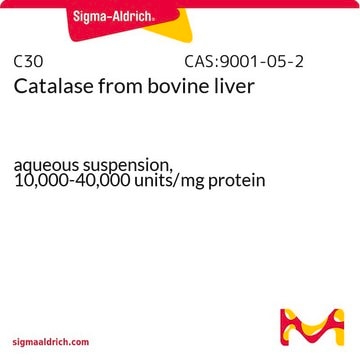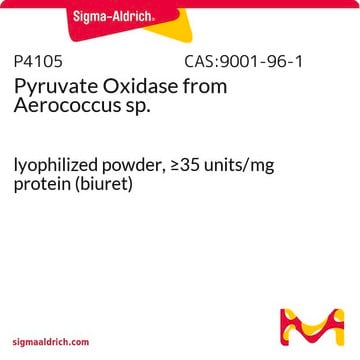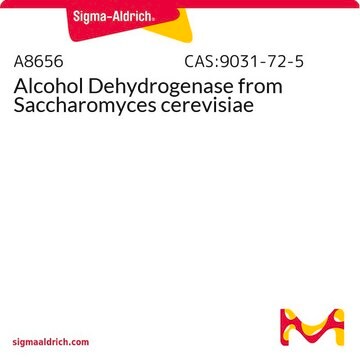A2404
Alcohol Oxidase solution from Pichia pastoris
buffered aqueous solution, 10-40 units/mg protein (biuret)
Sinónimos:
Alcohol:oxygen oxidoreductase
About This Item
Productos recomendados
Formulario
buffered aqueous solution
actividad específica
10-40 units/mg protein (biuret)
Condiciones de envío
dry ice
temp. de almacenamiento
−20°C
¿Está buscando productos similares? Visita Guía de comparación de productos
Descripción general
Aplicación
Acciones bioquímicas o fisiológicas
Definición de unidad
Forma física
Código de clase de almacenamiento
10 - Combustible liquids
Clase de riesgo para el agua (WGK)
WGK 3
Punto de inflamabilidad (°F)
Not applicable
Punto de inflamabilidad (°C)
Not applicable
Equipo de protección personal
Eyeshields, Gloves, type N95 (US)
Elija entre una de las versiones más recientes:
Certificados de análisis (COA)
¿No ve la versión correcta?
Si necesita una versión concreta, puede buscar un certificado específico por el número de lote.
¿Ya tiene este producto?
Encuentre la documentación para los productos que ha comprado recientemente en la Biblioteca de documentos.
Los clientes también vieron
Protocolos
To measure alcohol oxidase activity, this assay uses 2,2′-azino-bis-(3-ethylbenzothiazoline-6-sulfonic acid) and a continuous spectrophotometric rate determination at 405 nm.
Nuestro equipo de científicos tiene experiencia en todas las áreas de investigación: Ciencias de la vida, Ciencia de los materiales, Síntesis química, Cromatografía, Analítica y muchas otras.
Póngase en contacto con el Servicio técnico









